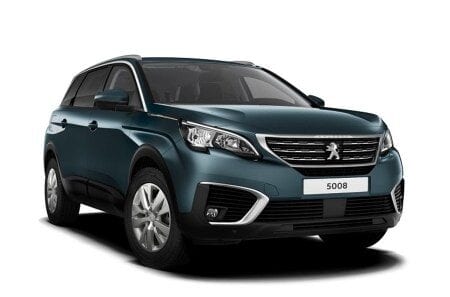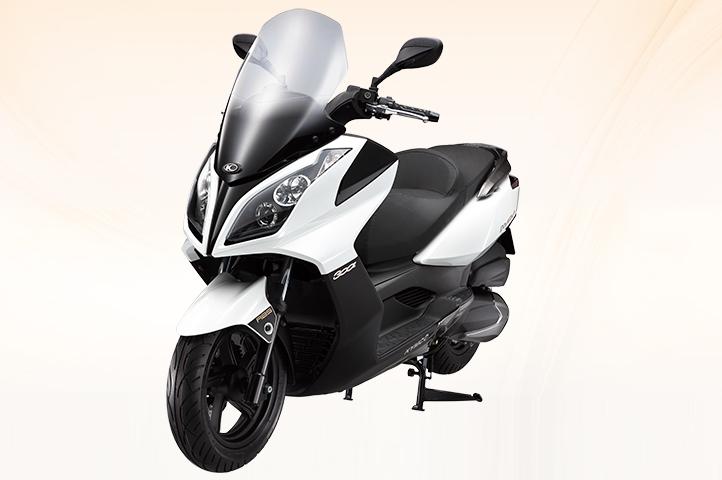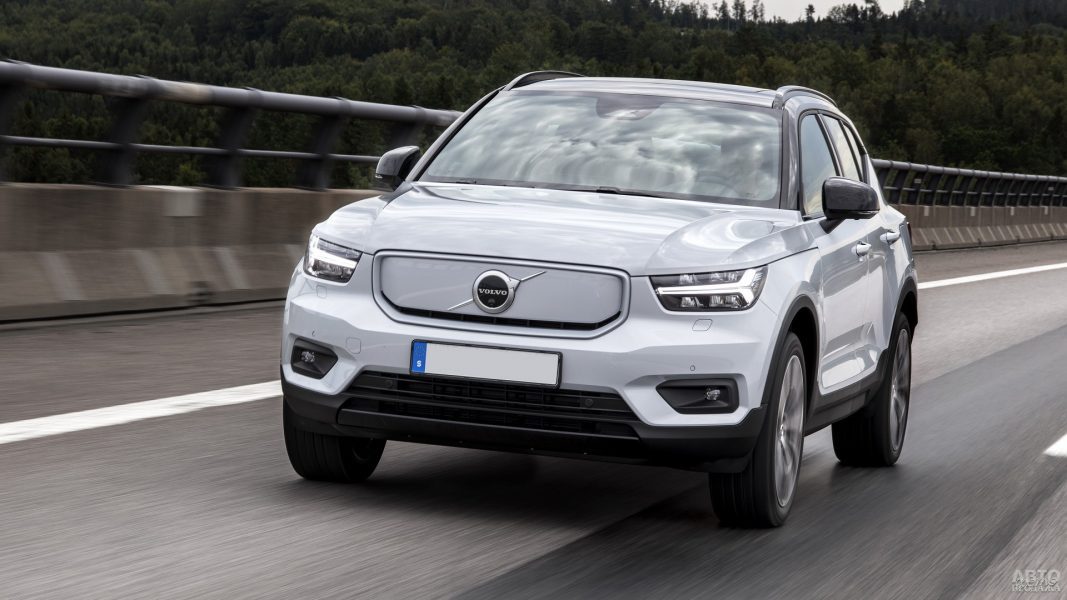
Volvo XC40 P8 Recharge - impressions after the first contact. Wow, nice and fast!
Content
Thanks to the courtesy of Volvo Poland, we were able to test the Volvo XC40 P8 Recharge, the first all-electric Volvo car to share a battery and drive with Polestar 2. Impressions? A great, attractive car that is extremely fast but also uses a lot of energy.
Volvo XC40 P8, price and equipment:
segment: C-SUV,
drive: AWD (1 + 1), 300 kW / 408 hp, 660 Nm of torque,
battery: 74 (78) kWh,
charging power: up to 150 kW DC,
reception: 414 WLTP units, 325 km EPA
wheelbase: 2,7 meters
length: 4,43 m,
price: from PLN 249.
This text is a transcript of hot impressions. Emotions appear in it, there will be time for reflection. 😉
Volvo XC40 Recharge P8 electric car – first impressions
But it drives you!
One of the commandments says that the name should not be used in vain, but ... for God's sake! Jesus Mary! But this car is moving forward! But he's in a hurry! But it speeds up until the mouth smiles! Specified 4,9 seconds to 100 km / h are just dry numbers, while this calm, pretty crossover is literally always ready to jump forward like a slingshot. Start under the light? So, up to 100 km / h you can’t go wrong even with a Porsche Boxster (!). Overtaking on the track? No problem, The XC40 P8 can and wants to accelerate whether you're driving at 80, 100, 120 or 140 km / h! [tested on a closed road section]

The machine rushes forward like Satan, and at a speed of one hundred and eighty kilometers per hour there is a limit, a cutoff. After the transmission, it feels like it can do more, but the manufacturer reasonably decided that 180 km / h would be enough. Because that's enough. I guarantee. Even 160 km / h would be enough. Even 150 km / h. Cab well muted enough that you learn about the speed first of all by looking at the meter - do it if you notice that other cars somehow disappear so quickly in the mirror.
And no, it is not as if you sit down, want to leave the parking lot and you end up on the wallbecause you cannot use the power of the machine. The accelerator pedal works progressively - as it probably does in all modern cars - so if you operate it gently/normally, you will have an orderly, calm stallion at your disposal. But when you hit him with the whip, I guarantee the experience will be insane.
But it looks great!
Volvo XC40 is a crossover in the C-SUV segment. The body of the electrician is an adapted body of the internal combustion model, cosmetic changes (including a blank radiator grille). The car was introduced in 2017, but still attracts attention. It inspires respect on the street, it seems big, solid, classic and beautiful at the same time.
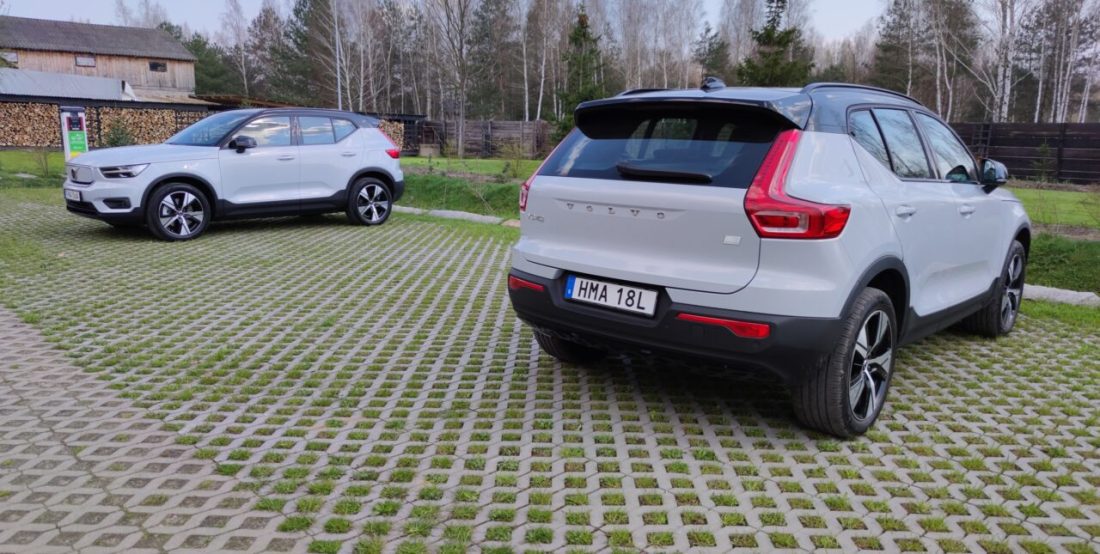
The car, massive on the outside, resembles a runabout in the interior. Slightly higher, but more compact. On the contrary, it didn't bother me: I felt that the large body on the outside plus the normal space inside was the effect of a thick solid body. I felt safe inside. I don't know if they made me a marketing, at least in the XC40 P8 Recharge, I believed that under any conditions it would ensure the safety of me, my family and my children ... Because someone devoted a lot of time to this problem.
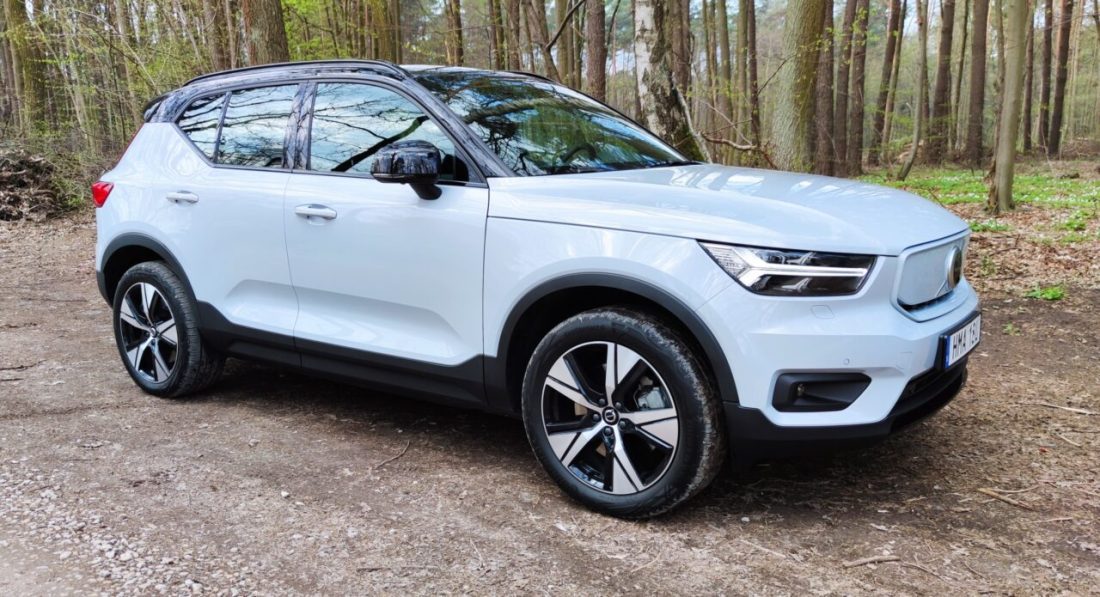
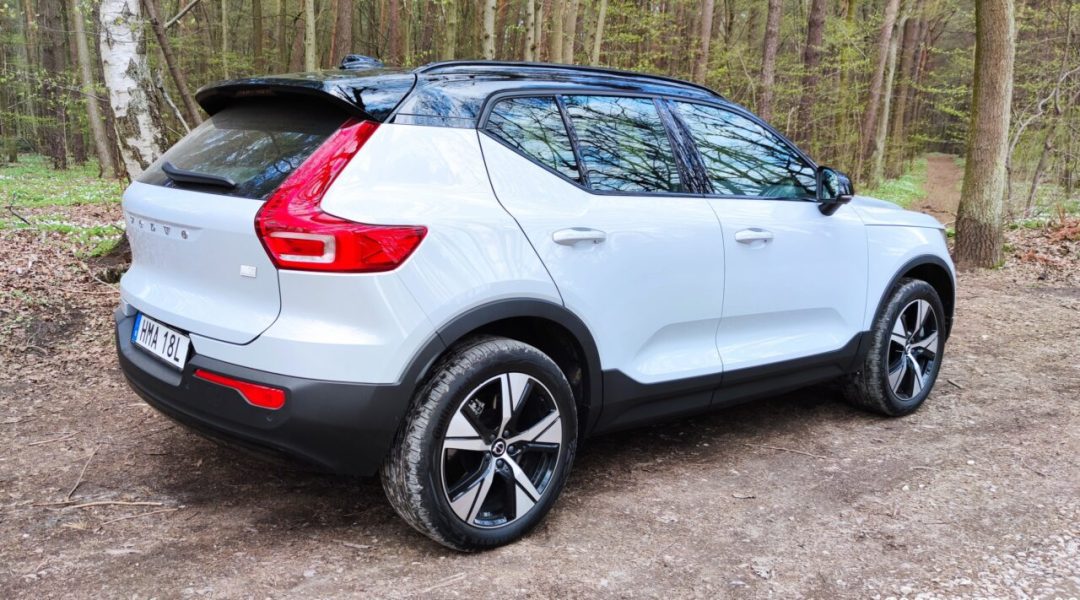
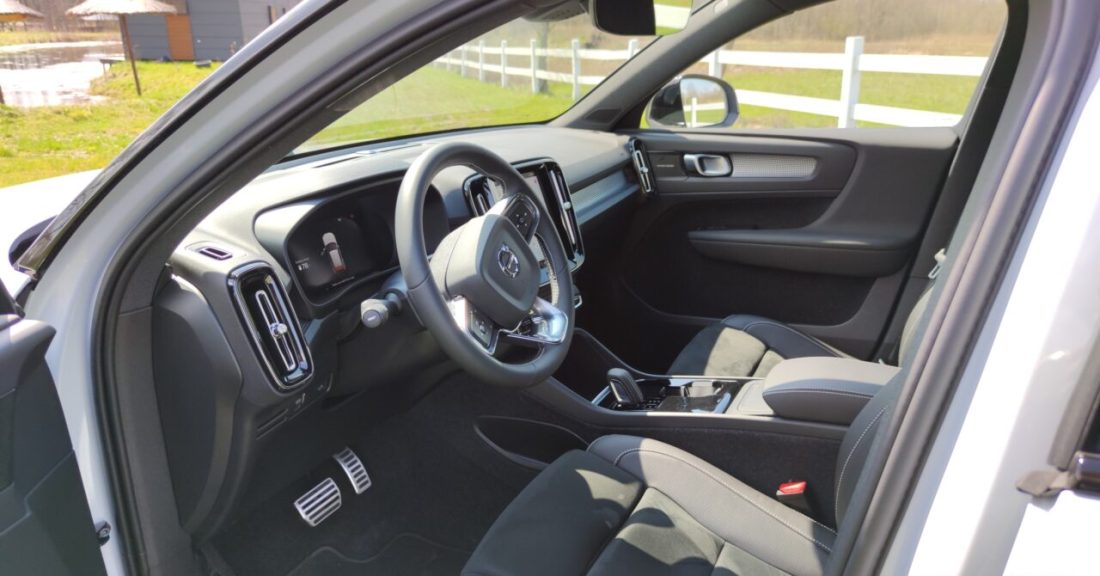
Speaking of bodywork, there's something about the body design that sounded great with the first XC60 - that streak, those curves, those lines [and those turn signals with archaic bulbs, eh…]. When I parked the XC40 T5 Recharge (plug-in hybrid) variant in a nearby parking lot and watched the reactions of passers-by, he the machine worked very well to generate interest: “Oh look, this is a new Volvo! But cool! "," You, damn it, are bigger than you think! "," Oh, that's what I would like to buy ... "
It is unlikely that any car placed in this place evoked more emotions. Perhaps only the BMW i3S caused so many comments before its shape became familiar to the inhabitants of Warsaw due to the late Innogy Go.
Electric Volvo XC40. How it consumes energy!
If you've had the chance to get to know any XC40, you will feel right at home in the interior of the P8. At first glance, everything is as old as it is now. However, if you look closely at the counters, you will notice that their creators wanted a little distraction from the past. In the plug-in hybrid (XC40 T5 Recharge) we have a speedometer on the left, a navigation screen in the middle, and a tachometer for energy consumption / recovery, informing us when the combustion engine starts (this will happen when the pointer goes into the drop field).
There are no signs in an electrician, there are numbers and light boxes. On the right, nothing came out:
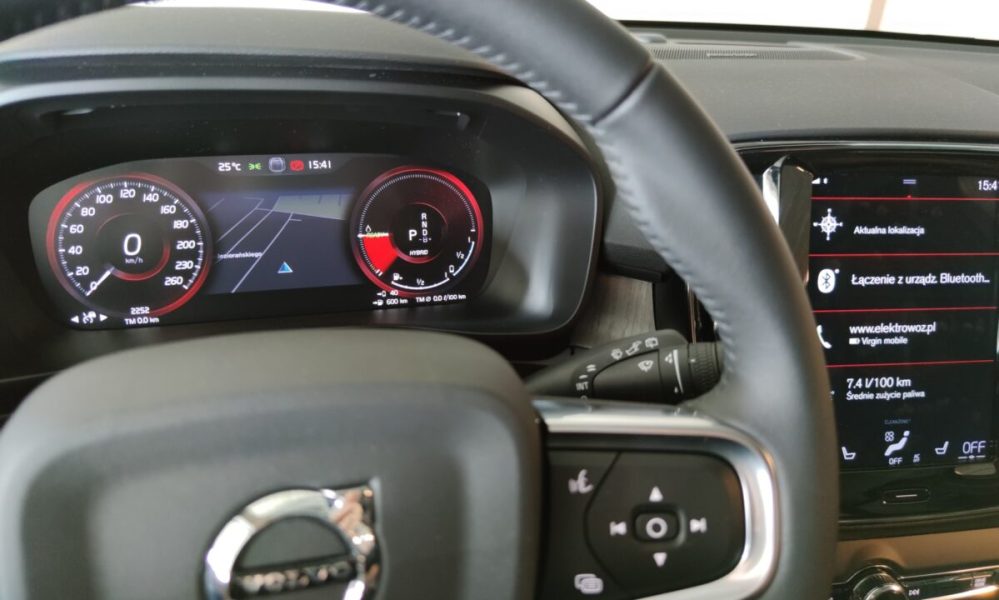
Volvo XC40 T5 Recharge (plug-in hybrid). The counters are displayed but look like a classic kit from a combustion car.
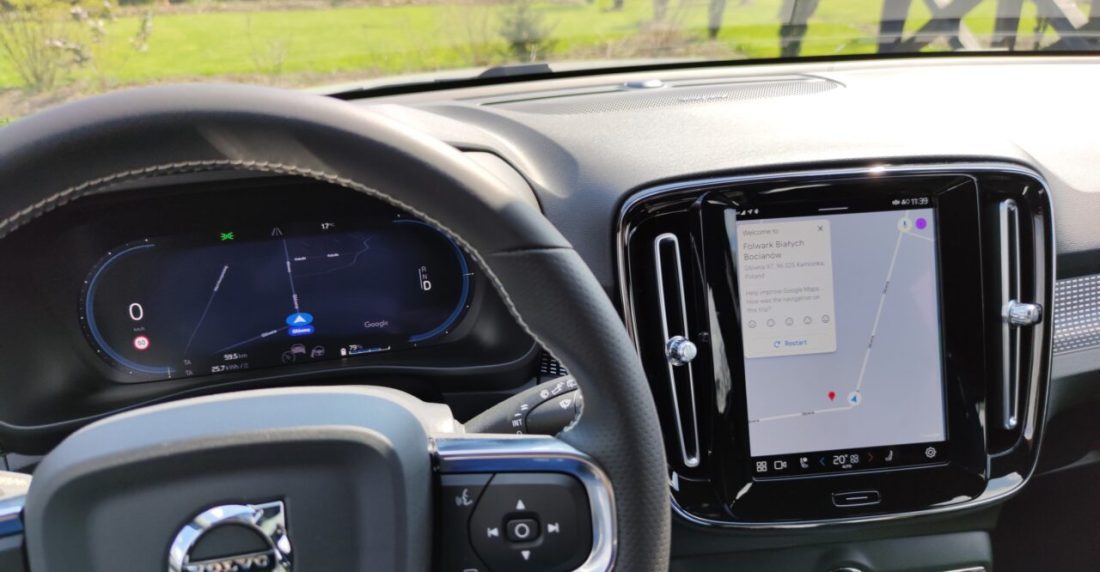
Speedometers Volvo XC40 P8 Recharge (electric car)
The car I had the pleasure of testing had Swedish license plates and was probably an early car series. This manifested itself in two minor problems: the XC40 could read the signs, but if they were not there, it regularly presented me with probably Swedish speed limits, which made me panic several times, because I was driving a permissible 120 km / h with a little compress, and the counter blinked "100 km / h".
The second (and last) problem was the inability to switch to average power consumption in this section. I was able to reset this value (which was confirmed by the corresponding message), but the meters only showed the average energy consumption over the entire trip, which could not be turned off. And since the trip went through the city and towns, dirt road and expressway, I had to draw conclusions, and not just read the numbers.
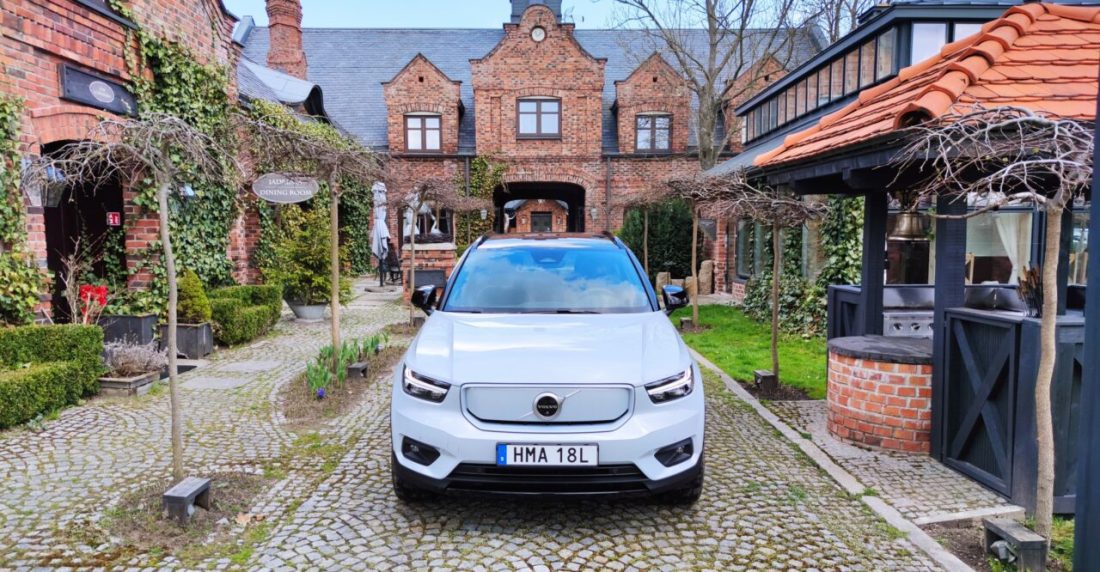
And I pulled out: this electric XC40 rides fantastic, but brilliant dynamics comes at a price... After 59,5 kilometers in 1:13 hours, of which about 1/4 of the route was an expressway plus areas for vehicle acceleration tests, the average energy consumption was 25,7 kWh / 100 km. When I returned on the express route (a little quieter because the traffic increased), the average consumption dropped to 24,9 kWh / 100 km, and even in congested Warsaw it did not drop below 24 kWh / 100 km.
If cruise control is set to 130 km / h, expect 27-28 kWh / 100 km, which means:
- 264 kilometers range шосе when the battery is discharged to 0,
- 237 kilometers of motorway with a discharge of about 10 percent,
- 184 kilometers of freeway when driving in the 15-85 percent range.
In mixed mode, it will travel 300-330 kilometers, depending on the weather and driving style. In winter, Nyland covered 313 kilometers at 90 km / h and 249 kilometers at 120 km / h.
How I like him!
The Volvo XC40 P8 Recharge is an insanely dynamic car. This is a modern car, driver-friendly thanks to the Android Automotive system. This is a car that gives you a sense of security. Good car. This is a car with an average interior space. This car is trimmed in places to encourage buyers to buy larger models. The few hours spent with him were a fantastic adventure.
If I had 300 PLN for free, who knows what would have happened ... Until then, I have a chance to come to the fore. He has a chance to point out flaws. There is a chance to work. Uf.
We'll come back to this car and take a cool look at it.
This may interest you:
